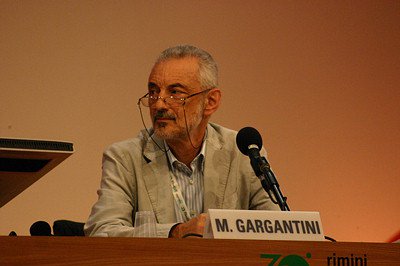American way of research
‘The ability to develop scientific and technology research and to utilize the results to boost the economy is one of the most outstanding traits of the US socio-cultural scene. Leading-edge research in all sectors is under way in the USA and young graduates who want to embark on a scientific career must necessarily undergo a period of training in that country. As to leading researchers, though Europe remains a source of genies, the best results in the scientific field tend to be achieved by US centres, even if most of the ‘brains’ are imported (Italian being a typical case). During the first 85 years of the Nobel Prize, out of 367 science prizes (physics, chemistry and medicine) 145 went to the US, almost 40%. The US research scenario is complicated and involves all aspects of the debate on science and techno-logy today: the ethical challenges of biomedicine, the environmental impact of new technologies, the timeli-ness of megaprojects for basic research in biology and physics (Genoma project, super particle accelerator), weapons research, new space projects and technological dreams like artificial intelligence and alien encounters. The exhibition is divided into four sections and attempts to give visitors, through a descriptive-suggestive cross- sectional display, an idea of the phenome-non, and to offer cues for a subsequent evaluation. The first section supplies a quantitative view of the situation, presents the major successes and explains the role played by universities, industries, federal organisations, the army. Special focus is put on large national projects like the Manhattan project, star wars, the conquest of the Moon. Thanks to the co-operation of famous US research in-stitutes, the second section enables visitors to enter into a number of science, ‘sanctuaries’. Large universities such as Princeton or the Massachusetts Institute of Technology (MIT) of Boston; centres established by the large multinational companies like AT&T’s Bell Labs or the HP Labs; centres linked to Federal organisations like NASA’s Jet Propulsion La-boratory (JPL); scientific and technological parks like Triangle Park in North Carolina; private institutions like the SRI, based in Menlo Park, but with research centres all over the world, including Italy. The exhibition will show how these centres are organized, their fields of research and some of their most significant achievements. The third section takes us into the future, suggests improbable trouble zones and attempts a comparison with other situations and other contexts, like that which exists in Italy. Finally, there is the ‘contacts and opportunities bank’, a new initiative in the history of scientific exhibitions, where visitors who so wish can find a range of detailed practical information (addres-ses, details of courses, advanced training program-mes) to help them to make direct contacts and take advantage of existing opportunities. As part of the exhibition, gadgets and T-shirts from the California and Massachusetts research centres will be on sale. MARIO GARGANTINI is an electronic engineer, a former teacher of physics and a science journalist: he is editor in chef of the chemistry magazine ‘RichMac Magazine'(published by Bias) and contributes the other journals such as ‘Il Sabato’ and ‘Libertà di Educazione’. He has published ‘I Papi e la scienza’ (Jaca Book, 1985) and ‘Uomo di scienza, uomo di fede’ (ElleDiCi, 1991). In 1987, he vas among the winners of the Glaxo Prize for the propagation of science and 1990 took the ‘For an intelligent Future’ Federchimica Award. At Meeting 1990, he was co-organizer of the exhibition ‘Journey to the Centre of the Earth’. Carlo Sommaruga recently graduated in management engineering from Milan Polytechnic with a thesis on plant engineering. He works for Quality Service of Mazzucchelli 1849, a chemical-plastic company.’





